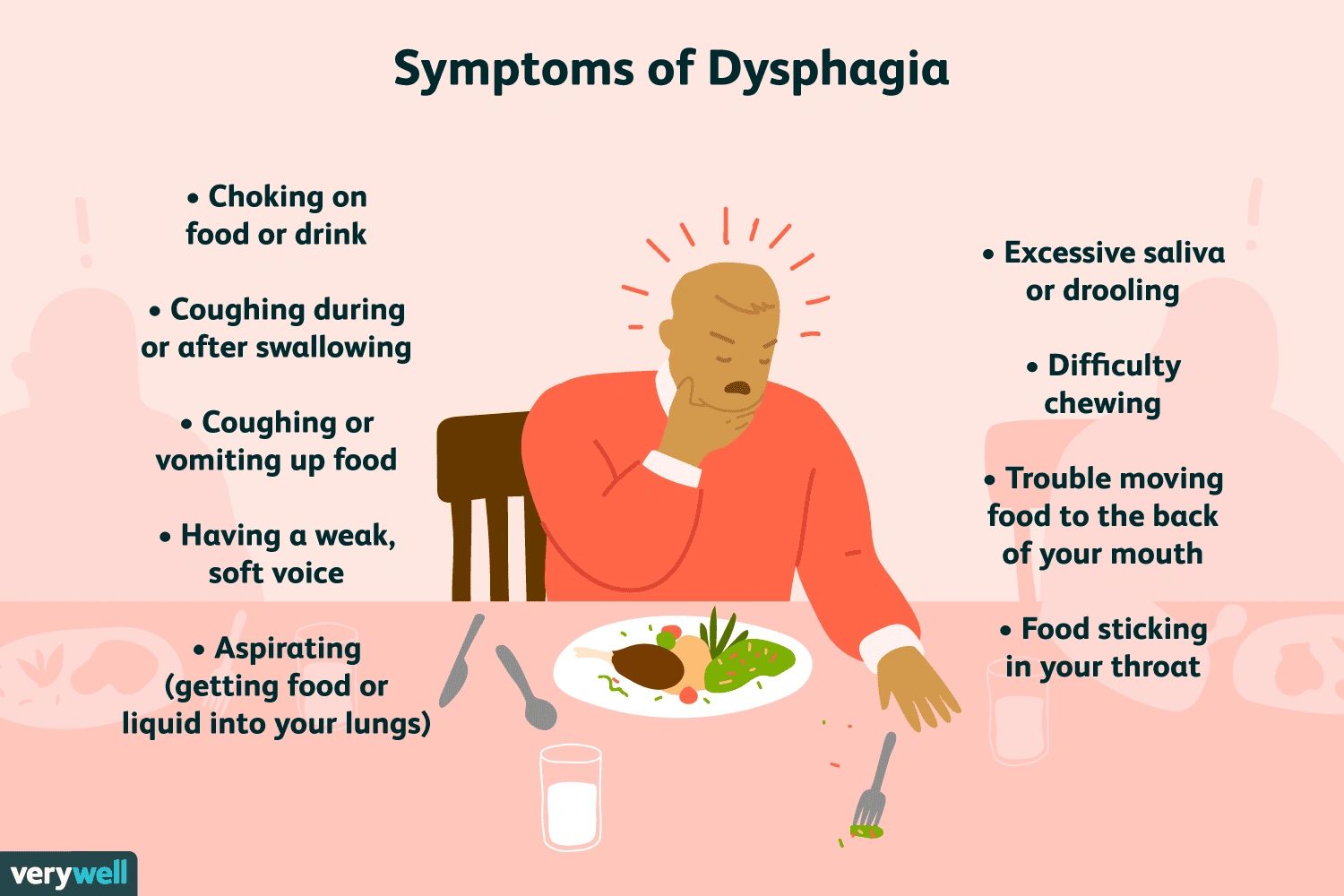Gastroenterology Appointments 732-597-7333
Gastroenterology Appointments 732-597-7333
Gastroenterology Appointments 732-597-7333
Gastroenterology Appointments 732-597-7333

Swallowing disorders (Dysphagia) can be divided into those caused by a mechanical blockage and those caused by a disruption of the muscle coordination that pushes food down the esophagus We call this second group Motility Disorders.

Mechanical dysphagia or blockage can be divided into benign and malignant causes and is usually diagnosed by upper endoscopy or upper GI series (X rays where patients drink contrast (fluid that shows up on x-rays). Benign causes include Rings and Webs which are extra tissue we are born with. Usually these cause intermittent problems with solid foods like meat and bread. These are easily seen on an upper endoscopy and can be broken up easily at that time with dilation (stretching the area with a balloon or bougie device). Other causes of benign obstruction are narrowing /strictures caused by damage from acid reflux, radiation, infection and allergic reactions such as Eosinophilic Esophagitis. These can be stretched during the time of the endoscopy as well . Malignant obstructions by cancer can be stretched or opened with stents (expandable tubular devices that span the obstruction), and then sent for surgery or radiation treatment if treatable.

Motility disorders generally give rise to difficulty in swallowing both solids and liquids. Sometimes the muscles that push food down are weak, and sometimes the contractions are too strong. Motility disorders can also be a cause of non cardiac chest pain. In order to diagnose motility disorders, an esophageal manometry or EndoFLIP is performed. Manometry involves numbing up the nose and passing a very skinny catheter that is lined with pressure sensors into the nostril and down to the esophagus. The catheter is connected to a computer where the pressures in real time are seen. The patient is then asked to swallow some water up to ten times. The procedure takes approximately 10 minutes and since there is no sedation the patient can drive home on their own. While may centers have nurses perform motility studies, Dr Gorcey performs all manometry studies himself.
EndoFLIP is a balloon placed during endoscopy under sedation which measures distensability and diameter of the esophagus, as well as motility and direction of swallowing. EndoFLIP can also be used to precisely dilate (stretch) the esophagus in patients with Achalasia or strictures.

Balloon catheters can be passed through the endoscope and then inflated under direct visualization to stretch the narrowing. This may need to be repeated every few weeks to months until the stricture remains open .

Progressively larger dilators or bougies can be passed to open up the narrowing /stricture during endoscopy. These can either be passed over a guide wire (preferable) or "blindly". This may need to be repeated every few weeks to months until the stricture remains open

Self expanding metal stents which are best used for cancers or tumors can be placed across the blockage and then sutured in using the Apollo Overstitch suturing device. If the stents obstruct a new stent can be passed inside the old one.

Stents can be deployed under direct visualization. A guide wire is placed across the stricture, then the endoscopy is removed and a deployment system is pass over the guide wire. The endoscope is then passed along side the guide wire and the positioning is controlled under direct visualization prior to deployment. Sometimes X-ray guidance is used to help positioning.

Normal manometry tracing after a swallow. The top line across (red) represents the UES (upper esophageal sphincter) and the lower line (green) the LES (lower esophageal sphincter). In between in the body of the esophagus.

This tracing shows ineffective propulsion of food due to lack of esophageal contraction. Note to significant connection between the UES and LES.

This tracing shows hyper contraction or "nutcracker" esophagus.Note the large prolonged red area which represents the contraction and compare this to the normal tracing. This can be a cause of non cardiac chest pain and can be treated with medication.

Esophageal spasm is seen in the third cell. Notice the contraction goes straight up and down indicating the entire esophagus is contracting at once

Achlasia is a disorder where the lower sphincter does not relax, causing severe chest pain, difficulty swallowing and regurgitation. Note the high pressure line (red) at the bottom of the tracing which never relaxes. In the above normal tracing notice the relaxation (blue) on the bottom line just before the swallow to let food into the stomach. In achalasia food often stays in the esophagus.

EndoFLIP (Functional luminal Impedance Planemetry) is a minimally invasive medical device used to enhance current procedures such as the endoscopy and manometry. EndoFLIP is a technology that simultaneously measures the area across the inside of a gastrointestinal organ (for example, the esophagus) and the pressure inside that organ . It consists of a measurment balloon placed in the esophagus

A soft measuring balloon is passed during Endoscopy across the GE junction during sedation. It is then inflated to a pressure equal to the pressure caused by food in the esophagus. Readings are then taken utilizing a graphical display. The system can also be used for precise dilation (stretching) of strictures (narrowing) or achalasia (a motility disorder)

EndoFLIP is ideal for evaluation hiatal hernia prior to and after surgical repair. Also, in patients with trouble swallowing or regurgitation, who have had normal endoscopy and have not improved with medical treatment, endoFLIP can help determine the problem.

EndoFLIP can also be used to diagnose Achalasia and esophageal strictures in the sedated patient. Dilation can also be performed with the endoFLIP balloon, and the results objectively measured.
We use cookies to analyze website traffic and optimize your website experience. By accepting our use of cookies, your data will be aggregated with all other user data.
Your friendly neighborhood gastroenterologist !! Dr Gorcey
732-597-7333